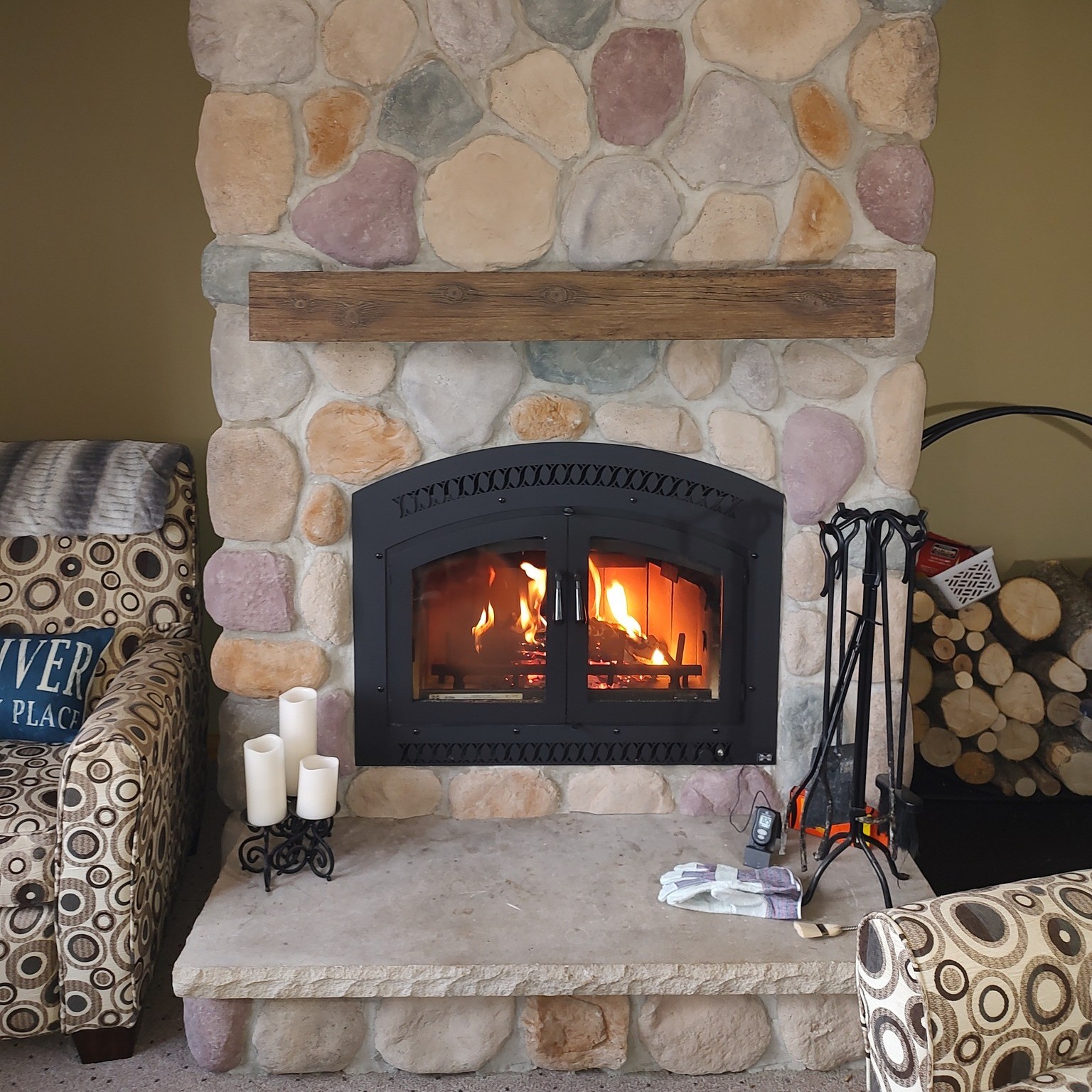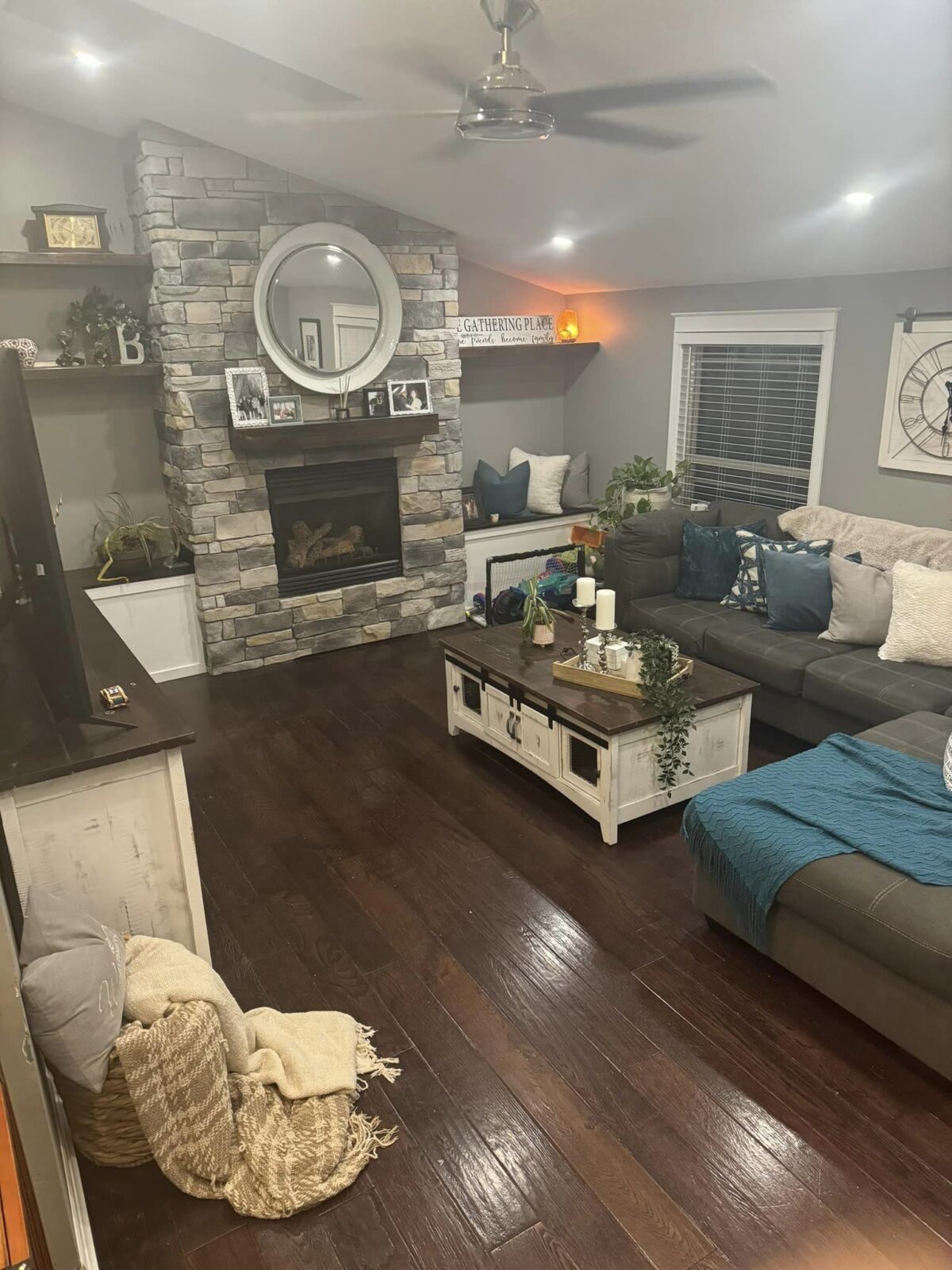When installing a fireplace, the expectation is a comfortable, ambient home enveloped with warmth. So, it can be a bummer if your cozy fireplace turns drafty, making what could have been a cozy, inviting room cold, chilly, and unpleasant.
Aside from being a nuisance, fireplace drafts are energy sappers. Your heating systems will work harder to keep your home warm, which in turn leads to higher utility bills. So, how do we fix this problem?
This article arms you with practical solutions to help you reclaim your fireplace from drafts. But first, what causes fireplace drafts?
Causes of Fireplace Drafts
Below are why your fireplace is drafty:
a) Downdraft
Wind blowing across your chimney’s top can create turbulence, pulling air down your fireplace flue instead of letting it escape upward. As a result, negative pressure is created, drawing cold air from outside into your fireplace.
b) Chimney Height
If your fireplace chimney is too short, gases and smoke might not rise high enough to escape, leading to downdrafts and backup. A chimney that is too tall can cause the smoke and gases to rise too quickly and lead to backdraft.
Generally, your chimney should be at least 2 feet taller than any other structure within a 10-foot radius and a minimum of 3 feet tall from where it meets the roofline.
c) Temperature Differences
Drafts can also occur if the temperatures outside the home are significantly lower than the temperatures inside. The pressure difference created will make air move from the warmer to the cooler place. This means colder air going inside your house.
d) Blocked Chimney
Blockages within the chimney caused by creosote buildup and debris such as leaves or bird nests can restrict the flow of gases and smoke outside, making them back into the house.
e) Improperly Sealed Fireplace
If your fireplace develops cracks or loses its seals, cold air from outdoors might infiltrate indoors, creating uncomfortable drafts. In addition, it can let smoke, gases, and even embers into the room.
f) Cold Flue
sufficient warm air is needed for a proper updraft. If your fireplace’s flue is cold, the temperature inside is cold, so it won’t let gases and smoke rise; instead, they will back up into the house.
g) Wet Wood
Wet wood doesn’t give off sufficient heat to make combustibles and smoke rise enough up the chimney and escape outside. Instead, they fall back into the fireplace and the room.
Related Posts:
How to Stop a Fireplace Draft
Let’s now fix drafts in your fireplace.
1. Find The Source of The Draft
To properly resolve a fireplace draft, you must first identify the source. Take time to assess different parts of your fireplace.
- Check if the damper seals properly by opening and closing it. Also, examine it for physical damage and corrosion.
- Inspect the flue liner for structural damages and blockages.
- Check for visible damage on the hearth and surrounding walls.
- Check the condition of the chimney cap.
Light a candle when your fireplace is unused and cold, and hold it close to areas you suspect are cracked or have gaps. If the flame flickers, the fireplace is drafty.
2. Repair or Install The Damper
If your fireplace has a malfunctioning damper, clean and repair it. Scrape off any rust, debris, and soot on the damper and lubricate any moving parts with a high-temperature sealant. Also, seal gaps with high-temperature silicone caulk and replace worn-out seals. Moreover, ensure the damper is properly aligned.
Install a new damper if your fireplace doesn’t have one or the current one is beyond repair. You can choose a throat damper (located at the flue’s base) or a top-sealing damper (situated at the top of the chimney). I recommend a top-sealing damper because it prevents drafts and also keeps out pests and rain.
3. Clean and Repair The Chimney
The chimney flue needs to be unobstructed to function properly. So, clean it with a chimney brush to get rid of creosote, soot, and debris. Clean the firebox while at it.
Also, repair the damages you found when inspecting the chimney. These may include:
- Fixing minor flue cracks with sealant or insert. Replace the whole flue liner if it is extensively damaged.
- Replacing a damaged chimney cap.
- Replacing loose or damaged mortar with new mortar. You should also replace all the damaged bricks.
Note
As you inspect the chimney for cracks and gaps, check the other parts as well. Seal the damage with repair products for masonry or fireplace caulk.
4. Close The Fireplace Door
Cold air from outside won’t enter your house from the fireplace if you close the fireplace door when the fire is out. Make sure the fireplace door is clean, in good condition, and aligned snugly with the frame—seal gaps around the fireplace door with weatherstripping.
5. Install a Chimney Balloon
If you can access your chimney’s interior, consider fitting a chimney balloon inside to prevent heat loss and stop drafts. This inflatable device is made of thin, strong plastic and is easy to install, reusable, and cost-effective.
Chimney balloons come in many sizes, so pick one that matches your flue’s shape and size. Below is how to install it:
- Vacuum clean the flue.
- Inflate the chimney balloon partially for easier installation.
- Position the partially inflated chimney balloon parallel to the opening above the firebox.
- Blow air into the balloon to fully inflate it and then close the valve. Ensure the balloon sits snugly against the flue walls.
- You should immediately notice a reduction in drafts. However, if drafts are still coming from your fireplace, adjust or reinflate the balloon to achieve a better fit and eliminate any leakage.
- Remove the fireplace before using your fireplace to avoid filling the room with gas and smoke. Consider tying something to the balloon’s handle or keeping a reminder card just in case.
- Reinstall the chimney balloon once you kill the fire and the chimney cools down completely.
Note
While built to be strong, chimney balloons can still get punctured. Moreover, installing and taking them out requires effort, so they might not be ideal if you use your fireplace regularly.
6. Use A Draft Guard
Fireplace draft guards made of metal, glass, or insulated fabric are designed to block drafts from entering your home through the fireplace opening. They also prevent heat loss and keep debris, pests, and smoke out.
- Measure the fireplace opening’s height and width to determine the size of the draft guard you need.
- Buy a draft guard that’s a minimum of 3 inches bigger than every side of the opening. Aside from getting the right size, ensure the color you pick accents your house’s interior.
- Place the draft guard flush with the fireplace’s opening.
- Take out the draft guard prior to using the fireplace. Fold it flat for safe, compact storage.
7. Insulate Your Fireplace
Insulating your fireplace and chimney helps prevent drafts by keeping cool air from entering the house. There are different ways to insulate it. These are:
a) Chimney Liner
Chimney or flue liners are long, flexible tubes that run from the firebox to the chimney’s top. They offer protection from smoke and gases, minimize creosote buildup, and funnel air in and out of your home, making your fireplace efficient.
In addition, they reduce heat loss when the chimney and fireplace aren’t in use.
b) Insulate The Chimney’s Exterior
You can insulate the exterior of your chimney with rigid insulation, insulation sleeves, or polyurethane foam. When insulating the chimney’s exterior, leave a gap between the insulation and the fireplace to avoid combustion.
Consider placing a fireproof material over the insulation to create more separation between the heat source and combustible materials.
c) Insulate The Chimney Cap
Put insulation on your current chimney cap or replace it with one with built-in insulation.
8. Fireplace Insert
You can kill two birds with one stone by installing a fireplace insert— get rid of a fireplace you don’t find appealing anymore and address draft issues. Since fireplace inserts are sealed, they contain the heat.
Get a fireplace insert that perfectly fits into the firebox to ensure you fully stop the draft.
Choose from the types of fireplace inserts below:
- Wood-burning inserts
- Gas Fireplace Inserts
- Electric Fireplace Inserts
- Pellet Fireplace Inserts
9. Close Windows and Doors
You can rectify a chimney downdraft by closing doors, exhaust vents, and windows, especially during windy days when you are more likely to feel the impacts of the differences in air pressure inside and outside your house.
Another way to combat chimney downdraft is by installing a chimney fan on top of the chimney. You can control it remotely.
10. Clean, Maintain, and Inspect Your Fireplace Routinely
You’ll catch and resolve the issues that cause drafts early if you keep up with your fireplace’s maintenance and inspection routine. That’s not all; keep your fireplace clean. Ensure you complete the required inspections, repairs, replacements, and cleaning before winter.
Final Remarks
The solutions above should help resolve draft problems in your fireplace. However, if the issue persists, seek the help of a professional who will accurately diagnose what’s making your fireplace drafty and propose the most appropriate solution.

Hi! I’m Susie, the creative mind behind Cozy Castle 101. I love sharing easy and simple ideas to make home and garden spaces cozy and inviting. From simple DIY projects and fun crafts to family-friendly recipes, I’m all about creating a warm, welcoming home where memories are made. Join me as I explore ways to add a bit of creativity and charm to everyday life!


